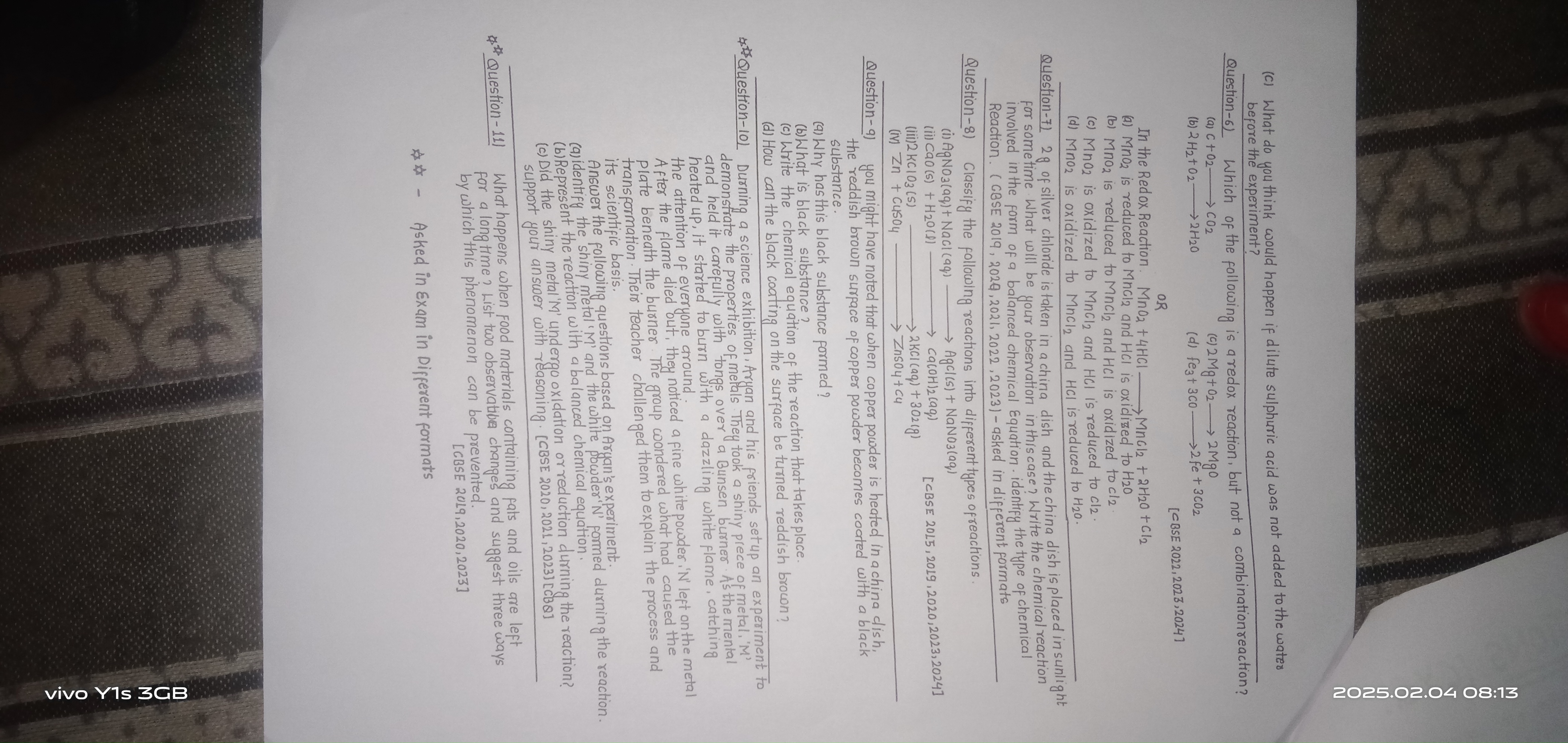What happens if a black substance is treated with a solution, and how can this redox phenomenon be explained? Provide three examples of this phenomenon.

Understand the Problem
The question asks about observing the changes when a black substance, formed during a reaction, is treated with a solution, specifically focusing on the redox processes involved and the expected outcomes under certain conditions.
Answer
It involves a redox reaction. Examples: tarnishing silver, rusting iron, permanganate reaction.
The phenomenon in question is a redox reaction. When a black substance forms, it suggests oxidation has occurred, where the copper surface reacts with oxygen or another oxidant. Examples include the tarnishing of silver, rusting of iron, and the reaction of potassium permanganate with glycerol.
Answer for screen readers
The phenomenon in question is a redox reaction. When a black substance forms, it suggests oxidation has occurred, where the copper surface reacts with oxygen or another oxidant. Examples include the tarnishing of silver, rusting of iron, and the reaction of potassium permanganate with glycerol.
More Information
Redox reactions are common in electrochemical cells and corrosion processes. The transfer of electrons results in oxidation and reduction, evident in everyday phenomena like rust and tarnish.
Tips
Ensure to identify both the oxidizing and reducing agents involved in the reaction.
Sources
- Oxidation-Reduction Reactions - Chemistry LibreTexts - chem.libretexts.org
- Redox Reactions - an overview | ScienceDirect Topics - sciencedirect.com
- Rusting of Iron - Explanation, Chemical Reaction, Prevention - BYJU'S - byjus.com
AI-generated content may contain errors. Please verify critical information